We’re all familiar with the typical subjects taught in elementary school classrooms…there’s reading, writing, math, and science. And, of course, the breaks kids get for recess and creative playtime. But an important subject that may not immediately come to mind is social and emotional learning, or SEL. Traditionally there is an element of SEL that is already embedded in typical learning subjects; however, teachers have started to implement standalone SEL curriculum into their classrooms…and it’s making a difference.
Sanford Harmony (SH) is a free, nationally available SEL curriculum that was recently adopted by early learning centers (ELCs) and elementary schools across the ESD 112 region. The intent of the curriculum is to teach children from a young age how to understand and manage personal emotions, how to be empathetic toward others, and how to develop and sustain meaningful and positive peer relationships.
The SH curriculum is unique and interactive, and it centers around the story of Z the Alien, who has crash landed on Earth and has to learn from human children about proper social and emotional behaviors. The kids take turns finding out things they have in common with Z, helping Z identify and talk about emotions, and teaching Z how to listen to others speak without interrupting them. The curriculum spans five units, including Diversity and Inclusion, Empathy and Critical Thinking, Communication, Problem Solving, and Peer Relationships.
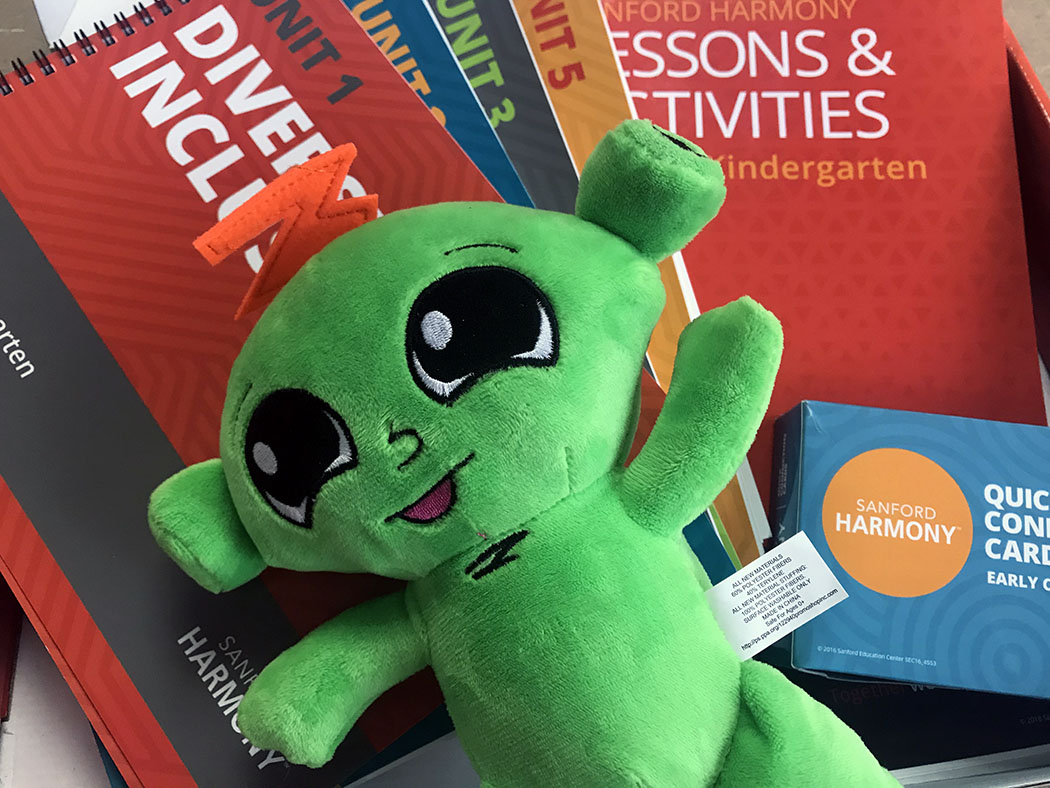
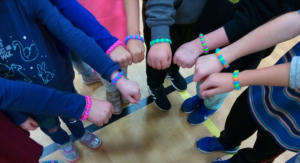
Students show off their “buddy bracelets”
Through the telling of Z’s story and related activities, students participate in group discussions (“Meet Ups”) and one-on-one activities (“Buddy Ups”). Meet Ups are an opportunity for the whole class to have discussions that focus on setting collective goals, like treating others with respect by using positive language with each other. During Buddy Ups, two students are paired together for an activity that is designed to help them get to know one another, like creating “buddy bracelets” for each other. Teachers also use “Conversation Starters” to help encourage discussion among students.
“The Conversation Starters are helping my students learn how to hold true conversations with each other,” said Sonshine Christian School first and second grade teacher Kristy Bates. “They give them the opportunity to not only share about themselves, but practice genuine listening. Anytime I use the [Sanford Harmony] curriculum, the students are instantly engaged because it’s so relatable.”
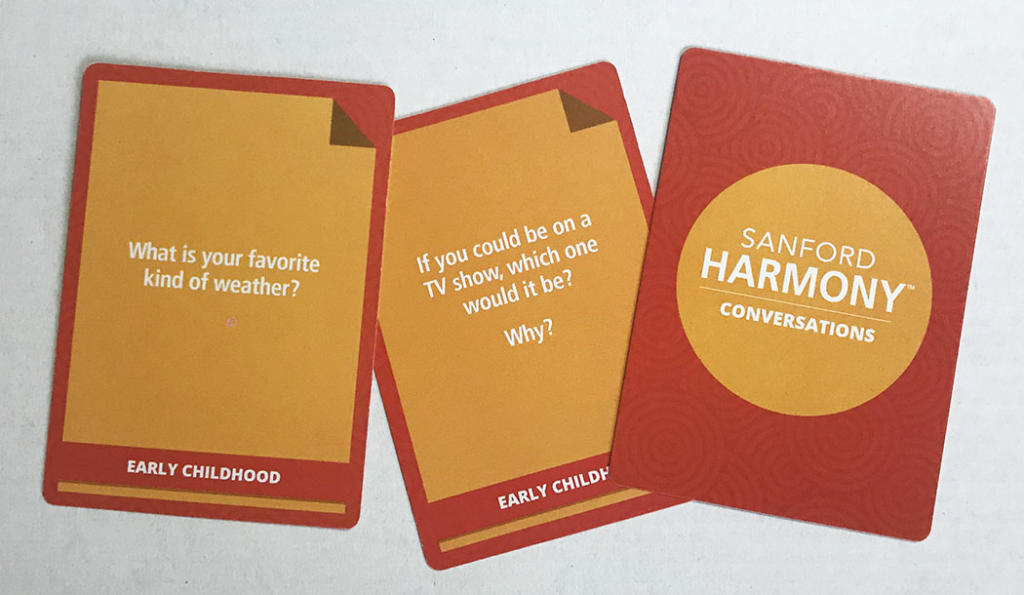
Conversation starter examples: “What is your favorite kind of weather?” and “If you could on a TV show, which one would it be? Why?”
It turns out that SEL is just as critical as any other subject taught in school, and children should learn it from a young age in order to grow into successful, happy, and fulfilled adults. The benefits of curriculum that focuses on SEL are far reaching. Since the SH curriculum’s inception in 2008, it has been the subject of three scientific studies designed to evaluate what effects it is having on the social and emotional development of young children. All three studies have found that the SH curriculum does have a positive impact on children’s peer relations when compared to control groups.
Schools and districts across Washington have made it a priority to find ways to incorporate SEL into their existing curricula to give their students the tools they need to be successful in all areas of life. After ESD 112 began to offer and train child care providers and elementary school teachers in the SH curriculum, educators are starting to see a difference in their students’ emotional development.
“Teachers who have implemented Sanford Harmony in their classrooms have reported a decrease in bullying and aggression, as well as an increase in overall school enjoyment, positive peer relationship interactions, and overall empathy,” said ESD 112 early learning coordinator Aprille McMillan. “This program is research-based, and we know that it’s having a highly positive impact on our students.”
McMillan helps ESD 112 Early Learning Centers get help with implementing the new SH curriculum through Early Achievers, a statewide program that provides free professional development support for child care providers. ESD 112 staff train early learning providers to be able to use and understand the curriculum toolkit in their classrooms, at no cost to teachers or their schools.
For more information on the Sanford Harmony Social Emotional Learning Curriculum, or to find out how you can use it in your classroom, reach out to Aprille McMillan.
Sanford Harmony Contact Information
Rob Cavness – MA Performance Psychology
Harmony Ambassador
City University of Seattle – Sanford Programs
P: 206.239.4813
E: rcavness@cityu.edu
www.sanfordharmony.org

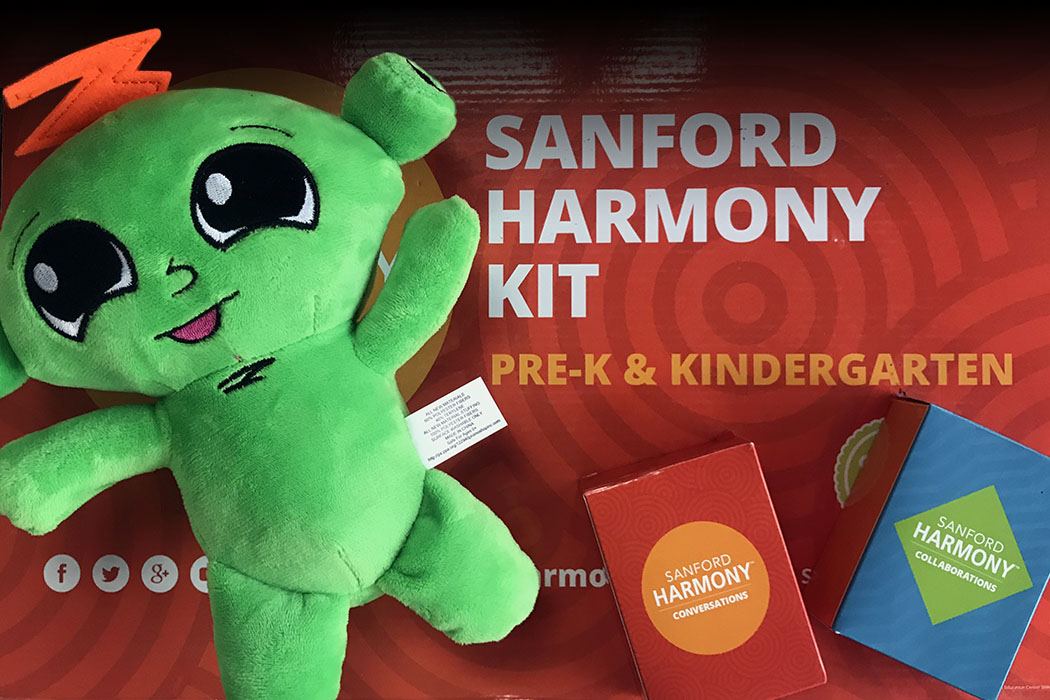
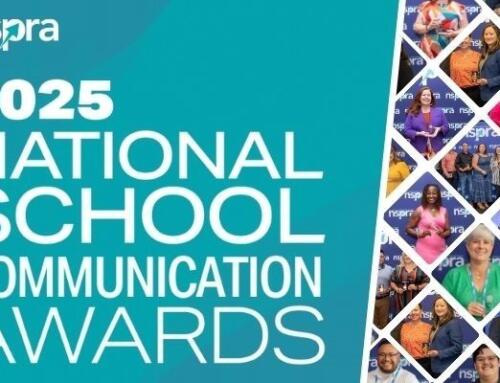
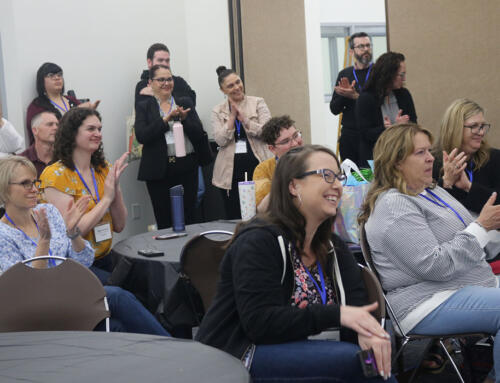
 ESD 112 equalizes educational opportunities for learning communities through innovative partnerships, responsive leadership, and exceptional programs.
ESD 112 equalizes educational opportunities for learning communities through innovative partnerships, responsive leadership, and exceptional programs.